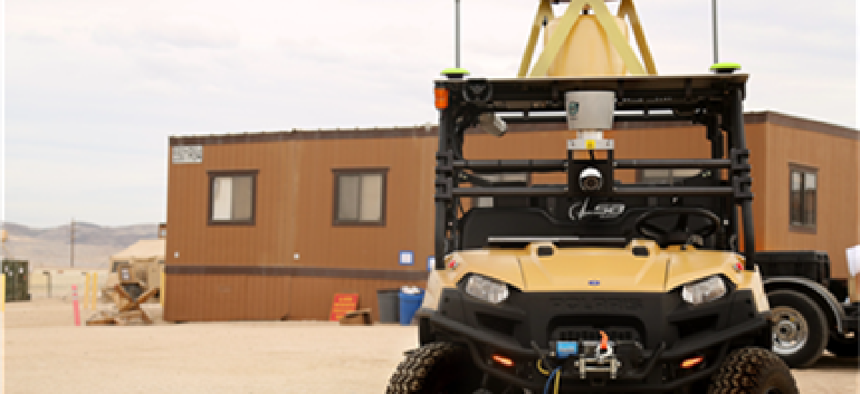Marines test unmanned vehicle for base perimeter defense
MDARS can conduct autonomous, random patrols and detect intruders.
Highlighting the military’s increased reliance on robotics, the Marine Corps has been exploring the possibility of using unmanned vehicles as a more efficient way of providing security and surveillance around bases.
Combat Center Marines from the Marine Corps Air Ground Combat Center at Twentynineplams, Calif., examined the viability of the Mobile Detection Assessment Response System (MDARS) in a test on Jan 30 at Camp Wilson’s ACE Compound, according to the Marines’ website. Mounted on a Polaris Military Diesel Crew vehicle, the system is capable of conducting surveillance and patrols of defensive perimeters.
The new system could be used to improve Air Base Ground Defense, supplementing current base defenses.
Originally a joint Army-Navy development effort, MDARS is designed to provide multiple platforms with the ability to conduct random patrols and determine the status of inventoried warehouse items, according to the Space and Naval Warfare Systems Center, Pacific, which provided technical direction for the program. The first operational MDAR went online at Nevada National Security Site, providing security patrols of the nuclear test site.

The system uses multiple detection systems such as Forward Looking Radar, Radio Frequency Identification, Radar and Light Detection and Ranging sensors to avoid running into obstacles and to detect enemies at up to 200 meters, according to General Dynamics, which has worked on developing the system. Additional infrared and full-color cameras allow users to detect objects.
MDARS can be controlled by a user operating the cameras and using a joystick or gaming controller, or it can move autonomously through preset functions and paths. The entire system consists of a networking infrastructure and power supply for radio and GPS functions, an uninterruptable power supply, microphone, speakers, mouse, keyboard and a dual-monitor display. One control station can manage up to 16 of the vehicles simultaneously.
When working autonomously, the system assesses novel events and alerts a human operator when necessary. It also can navigate through dynamic and static events such as going around pedestrians or parked vehicles.
Pat Cullington, MDARS project manager at SPAWAR System Center Pacific, has said that the system can be modified to fit certain mission requirements put forward by the Marines, as they continue to scrutinize the viability of the system.
“What we’re here for now is to learn more about the Marine mission,” Cullington said. “How this could be used and how we could develop it to fit the mission.”





